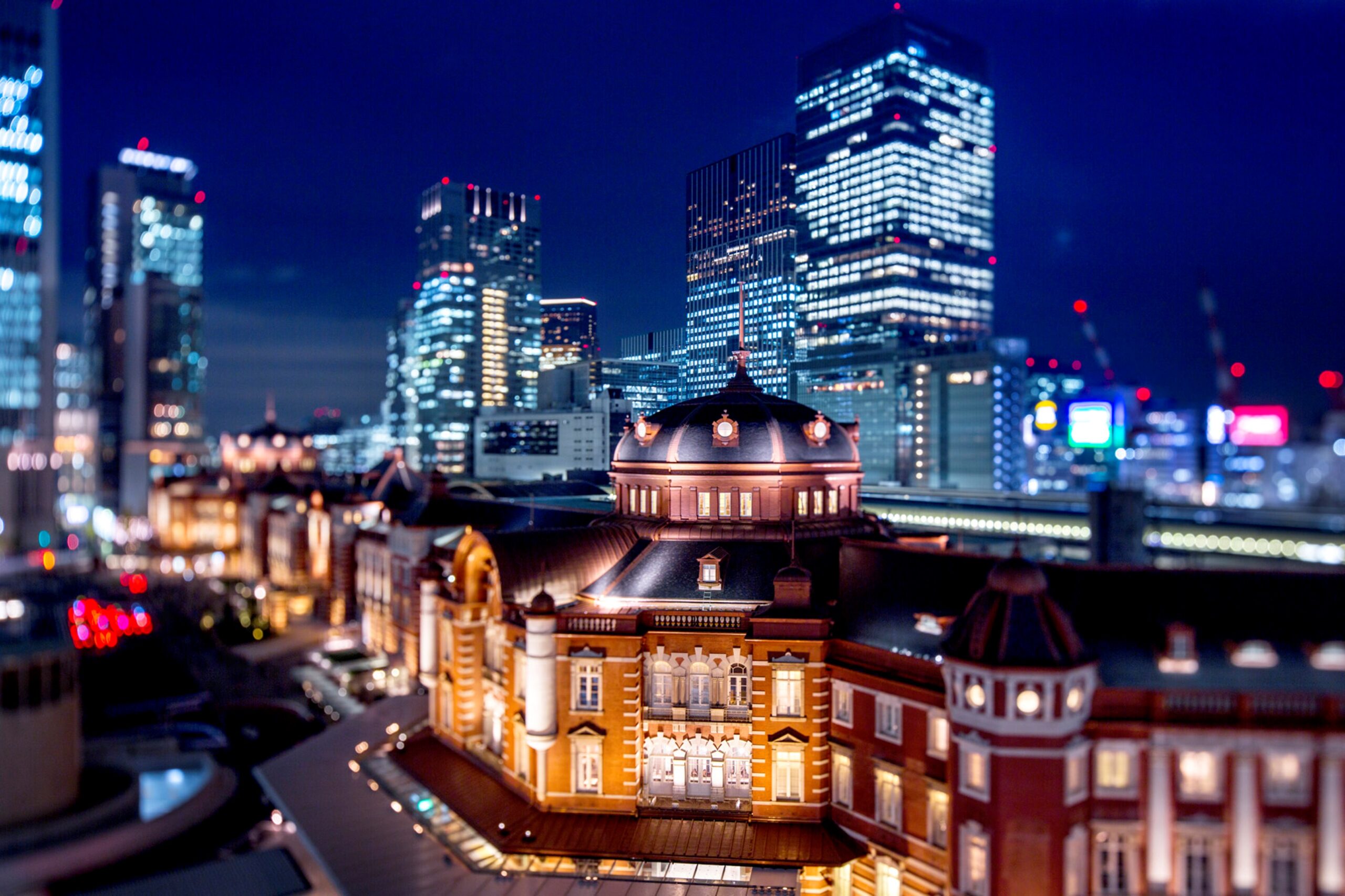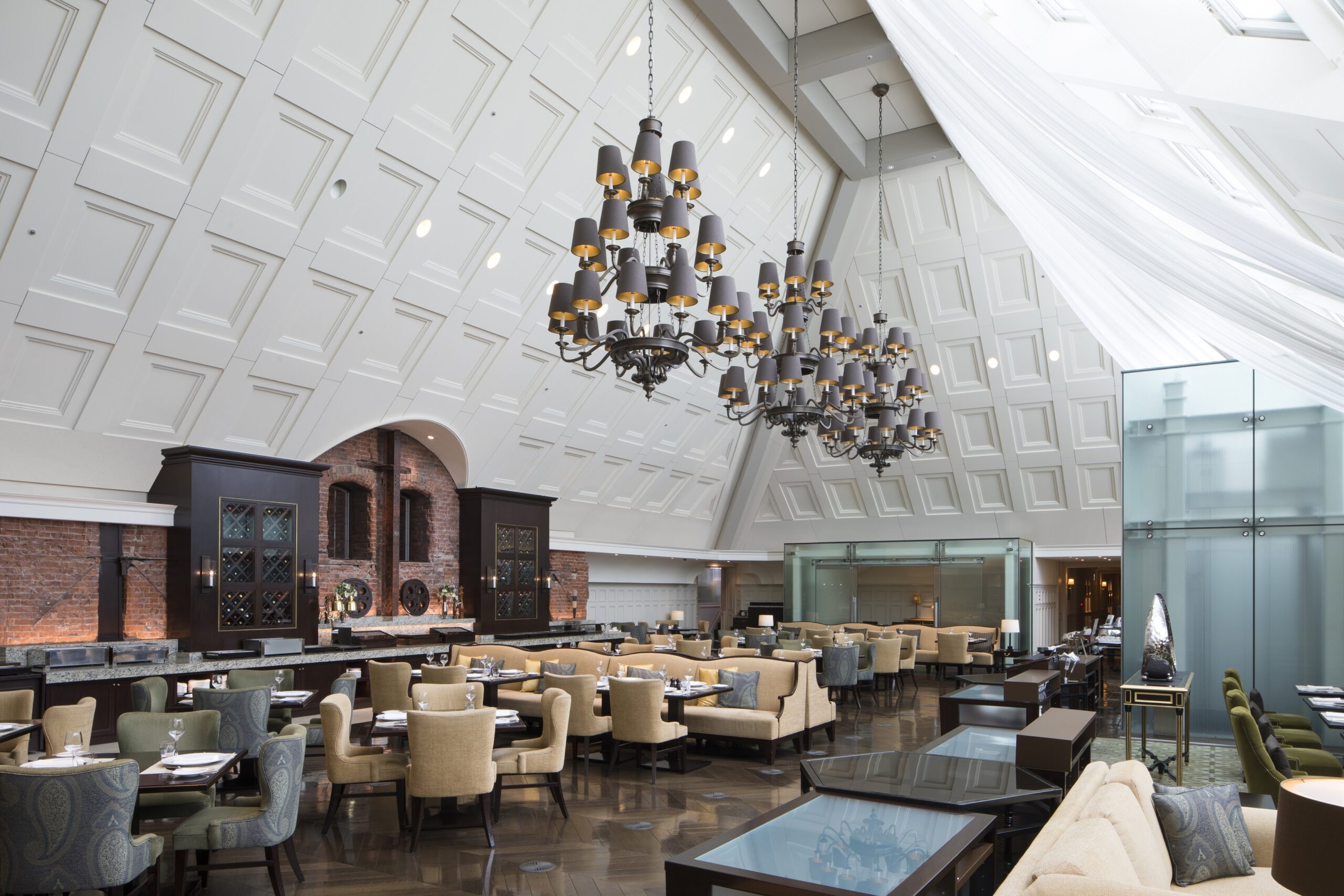The train from the airport arrives at Tokyo Central Station with no delay. I’m not surprised: punctuality is a true value over here. After getting out, I head towards The Tokyo Station Hotel.
To be honest, I’m not a fan of hotels next to railway stations as I have always thought that they are unlikely to stand out. In most cases, they have been opened just to offer tourists with low expectations an overnight stay between one train and another.
When I stop in front of its magnificent façade, I realize that The Tokyo Station Hotel is exactly the opposite.
Let’s be honest, its location is handy if you want to catch a Shinkansen or a simple local train, but the experience for those who have the chance to book one or more nights here offers so much more.

I spend a few minutes admiring the architecture of the building that contrasts with the surrounding skyscrapers of the financial district Marunouchi (which means “inside the circle”), where the three national banks are based.
The five-star hotel is part of the Marunouchi Station Building and it’s hosted in its extended wing. Built by Tatsuno Kingo, it was founded in 1915. Today, it’s the second oldest building in Tokyo, after the Imperial Palace, which is just a few minutes’ walk away.
It’s a rare gem because in the Japanese capital historical buildings are not preserved, they are demolished to create new ones that are earthquake-proof.
The Tokyo Station Hotel has always remained open, even during the Second World War, with only a long break for its upgrade, from 2006 to 2012, run by the English company Richmond. The main result of these works is the Atrium, the highest section that was opened with enormous ceiling windows.

There are 150 rooms and suites, painted with nine shades of white. I spend one night in a suite before meeting Chitose Yagi, the marketing manager, just in time before a trip to the north of the country.
“When the samurai era ended, the building was modernized, as evidenced by the rich photo gallery. The celebrations for the 150th anniversary of the train station have just ended. The first train left from here in 1872”.
Unlike other structures, the Tokyo Station Hotel can be considered an attraction even for international travellers who don’t spend a night here. Alongside pictures of its collections, there are QR codes to scan that tell stories of a city in constant evolution.

The culinary offer is noteworthy: there are ten restaurants, from the Toraya Tokyo, a 400-year-old lounge bar with memorabilia on the city, and the two signatures Camellia and Blanc Rouge, with chef Masahiro Ishihara, known for having created an entire “liquid” menu with dietary courses.
Curiosities and anecdotes are countless. Among these, one struck me: the entire complex also hosts the Emperor’s Waiting Room. It’s on the ground floor and it goes without saying that it’s not open to the general public.
The hotel seems to be the ideal place to write a novel. It is no coincidence that it was the favourite of Seichō Matsumoto, author of mysteries, and of the Nobel Prize for Literature (1968) Yasunari Kawabata, who got inspired by the property for his books.
One last curiosity: the 82-year-old master bartender Hisashi Surgimoto was awarded by Forbes Travel Guide as the best employee in the hospitality industry. He is a true legend and source of inspiration, thanks to his commitment to work over decades. As soon as you mention him, you can notice the reaction of his coworkers showing authentic esteem and respect.